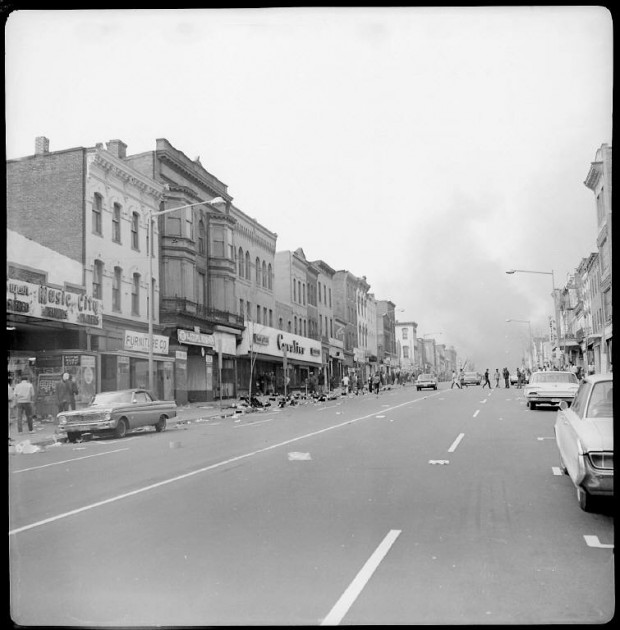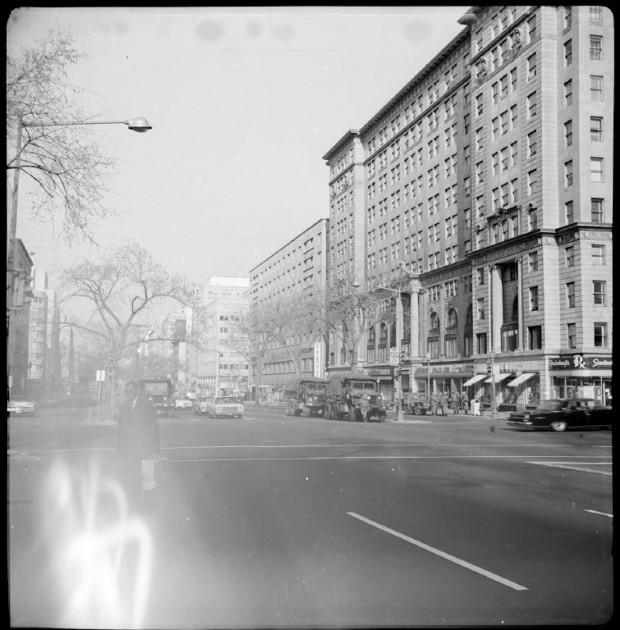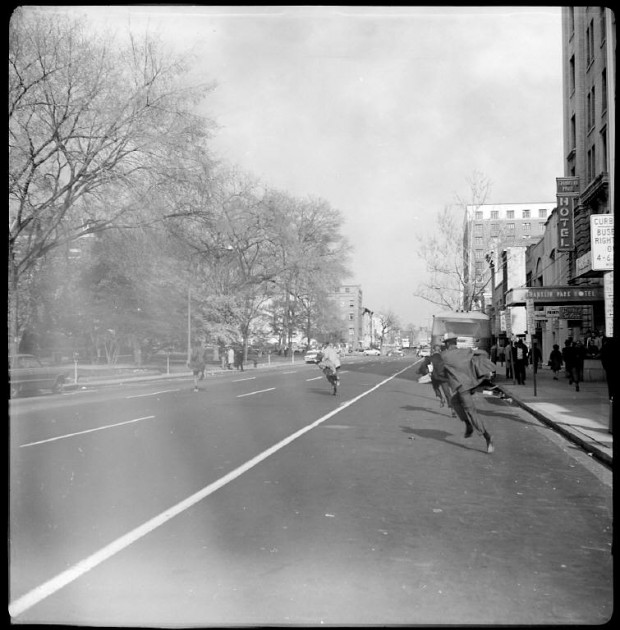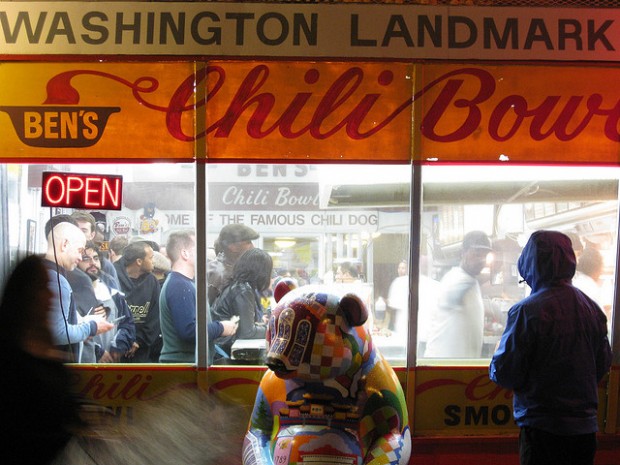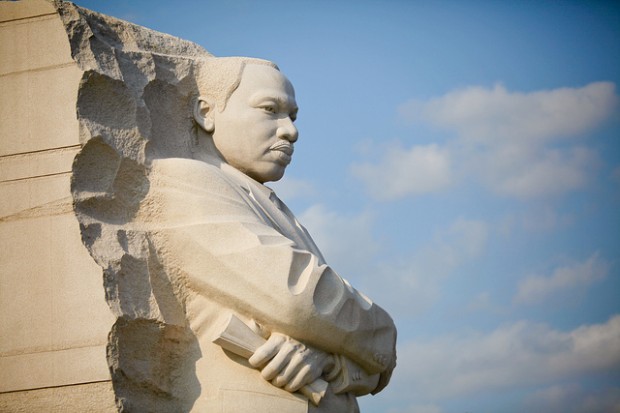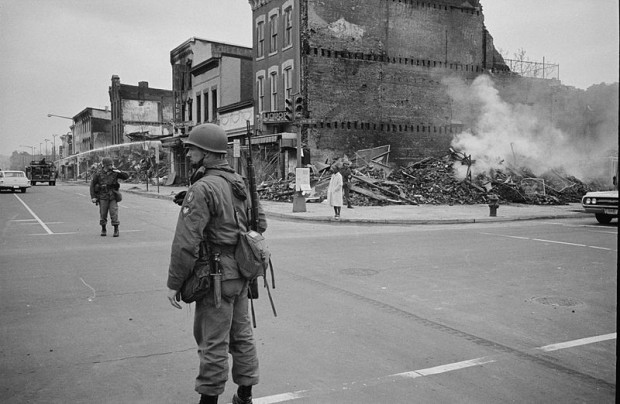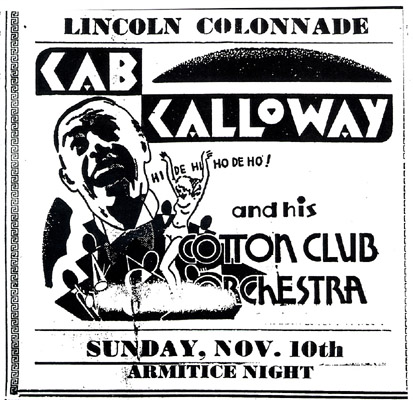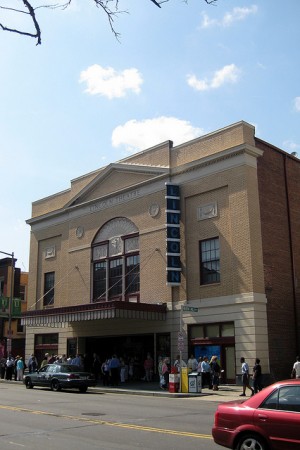The D.C. riots that erupted in the wake of the 1968 Martin Luther King, Jr. assassination resulted in more than 1,000 burned down buildings, dramatically changing the District’s landscape. Such damage altered the course of the city’s development, and the riots are still brought up in current discussions over gentrification and revitalization.
But exactly how did the city look during the four days of rioting? Yale University has released a collection of rare negatives documenting the riots and the government response. They were taken by part-time Associated Press photographer Alexander Lmanian, and the images he captured show soldiers mobilizing in D.C. streets, people looting and damaged storefronts. See our gallery below:
Alexander Lmanian / General Collection, Beinecke Rare Book and Manuscript Library, Yale University permalink
Rioters, soldiers, and damaged buildings during the riots.



